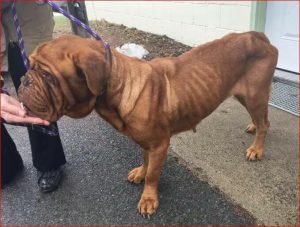NYSHA Behind the Scenes Working for Animals
Anyone reading this probably has rescued animals at home, often with sad – even tragic – or unknown histories. Many come from shelters or are simply found, in need of anything from food and shelter to extensive medical care. Frequently we hear how lucky these animals are to be rescued, but many times it seems that we are the lucky ones when they cross our paths and now enrich our lives daily. The rewards are endless.
Day after day, we all hear or see the news — another animal is a victim of human cruelty. For NYSHA, this frequently means that we will be involved some way. We may give advice, advocate for the animal, offer a reward, help with securing financial aid to the organization saddled with a huge endeavor, send emails to members to take action, issue press releases, become part of a team effort to get to the bottom of and resolve the situation, or assist law enforcement to prosecute cruelty cases.
Even though we do not have animals in our own care as a shelter, NYSHA has a huge impact on animals throughout the state every day.
We are visible in the Legislature speaking up about animal protection laws, or even assisting in writing them. In addition, we are recognized and highly respected for our workshops training law enforcement officials to effectively apply NY’s anti-cruelty statutes. All this is very important, but we also derive great satisfaction in the everyday work we do behind the scenes.
In the last few months, our phones have rung about anything from starving horses to abandoned dogs to cats needing to be spayed. Unfortunately, in too many cases, local animal protection groups had been unable or unwilling to help, but our board members, staff, and volunteers did become involved. Over the years, we have built an extensive network of contacts around the state whom we can turn to for assistance.
For example, after a situation was reported to Equine Resource Rescue (ERR) in Orange County, ERR contacted NYSHA. A blind mare and her son, both in their 30’s, lived in poor conditions and the owner was willing to give them up. NYSHA worked with ERR, who went to assess the horses and discuss their removal. In the meantime, we contacted Catskill Animal Sanctuary (CAS) in Ulster County. After checking their facility to make a safe space for a blind horse, CAS kindly agreed to accept them, but only after upgrading the pasture the two horses would share. NYSHA paid for boarding the horses for a month, until they could be relocated. Ashley and Pliers are now thriving and live safely and happily at the Sanctuary.
Recently, a large shelter contacted NYSHA for information on setting up an Animal Cruelty Task Force, the creation of which was going to be a featured topic in an upcoming seminar. NYSHA was able to connect them with authorities in a county that had already successfully formed one.

When we hear of cruelty cases, we often reach out to the animal shelters who house the victims to see if we can help in any way. In some cases, we have assisted with advice about security bond posting applications and sometimes we help with a contribution toward the care of the animals, since the costs can be a huge financial strain on the organization. Examples of our reaching out included a case in which the James A. Brennan Memorial Humane Society took in 22 mastiffs, and another, in which the Susquehanna Animal Shelter took in starving dogs seized by the police. We were gratified when the president of the Montgomery County SPCA told us, “I have found the forms and guidelines on your website extremely helpful. I use the guidelines in investigations. I used them in a recent case of 48 farm animals. I also directed the Montgomery County Sheriff’s Office to your website for forms and guidelines in this case.”
We love doing what we do, but of course hope and wish that through legislation, law enforcement, humane education, and other means our services would not be required. Fortunately, as each of us does our own small part in rescuing animals, NYSHA will continue to serve, on a larger scale, as a resource and guide for their protection.
New York State Humane Association Humane Review, Vol.XXXI Fall 2017.